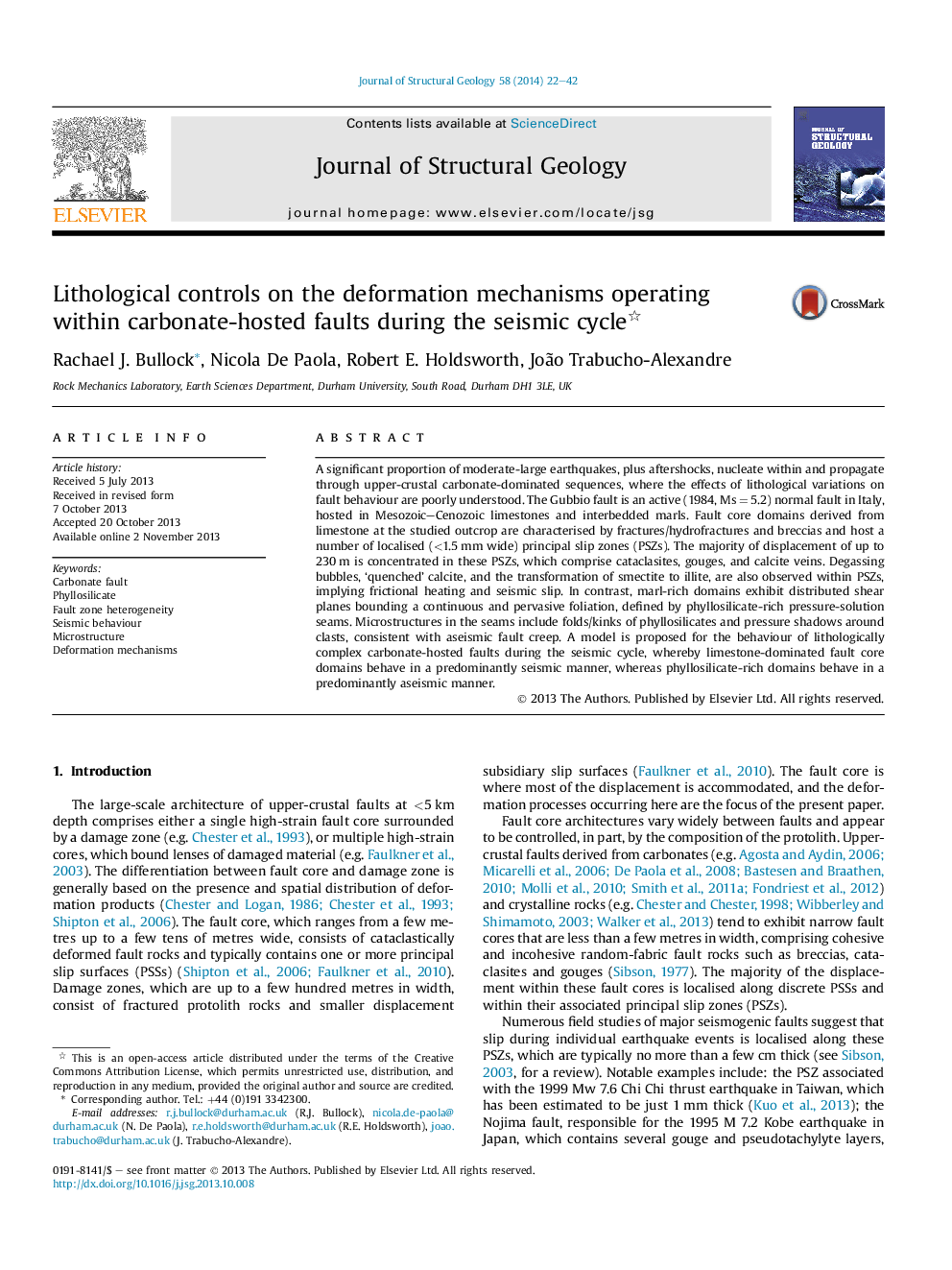| کد مقاله | کد نشریه | سال انتشار | مقاله انگلیسی | نسخه تمام متن |
|---|---|---|---|---|
| 6444968 | 1640519 | 2014 | 21 صفحه PDF | دانلود رایگان |
عنوان انگلیسی مقاله ISI
Lithological controls on the deformation mechanisms operating within carbonate-hosted faults during the seismic cycle
ترجمه فارسی عنوان
کنترل سنگ شناسی بر روی مکانیزم های تغییر شکل عامل در گسل های کربناته میزبان در طول دوره لرزه ای
دانلود مقاله + سفارش ترجمه
دانلود مقاله ISI انگلیسی
رایگان برای ایرانیان
کلمات کلیدی
موضوعات مرتبط
مهندسی و علوم پایه
علوم زمین و سیارات
زمین شناسی
چکیده انگلیسی
A significant proportion of moderate-large earthquakes, plus aftershocks, nucleate within and propagate through upper-crustal carbonate-dominated sequences, where the effects of lithological variations on fault behaviour are poorly understood. The Gubbio fault is an active (1984, Ms = 5.2) normal fault in Italy, hosted in Mesozoic-Cenozoic limestones and interbedded marls. Fault core domains derived from limestone at the studied outcrop are characterised by fractures/hydrofractures and breccias and host a number of localised (<1.5 mm wide) principal slip zones (PSZs). The majority of displacement of up to 230 m is concentrated in these PSZs, which comprise cataclasites, gouges, and calcite veins. Degassing bubbles, 'quenched' calcite, and the transformation of smectite to illite, are also observed within PSZs, implying frictional heating and seismic slip. In contrast, marl-rich domains exhibit distributed shear planes bounding a continuous and pervasive foliation, defined by phyllosilicate-rich pressure-solution seams. Microstructures in the seams include folds/kinks of phyllosilicates and pressure shadows around clasts, consistent with aseismic fault creep. A model is proposed for the behaviour of lithologically complex carbonate-hosted faults during the seismic cycle, whereby limestone-dominated fault core domains behave in a predominantly seismic manner, whereas phyllosilicate-rich domains behave in a predominantly aseismic manner.
ناشر
Database: Elsevier - ScienceDirect (ساینس دایرکت)
Journal: Journal of Structural Geology - Volume 58, January 2014, Pages 22-42
Journal: Journal of Structural Geology - Volume 58, January 2014, Pages 22-42
نویسندگان
Rachael J. Bullock, Nicola De Paola, Robert E. Holdsworth, João Trabucho-Alexandre,
